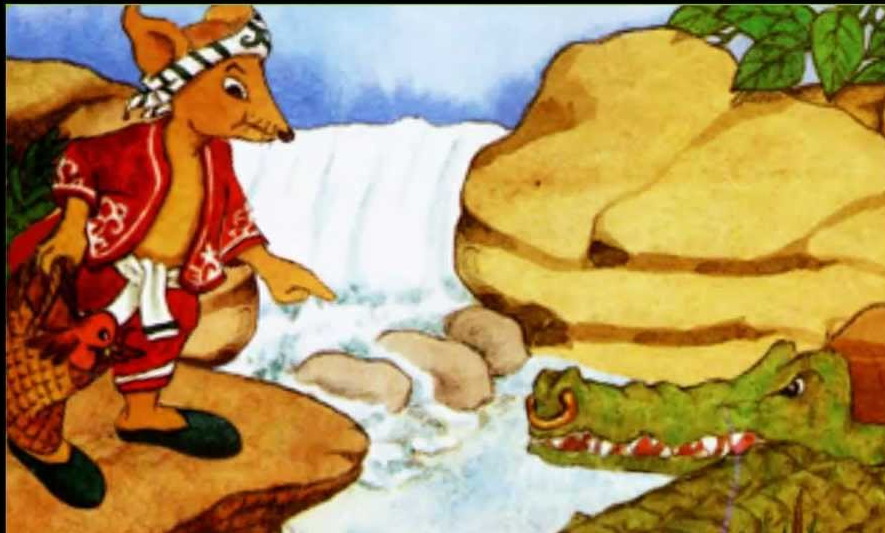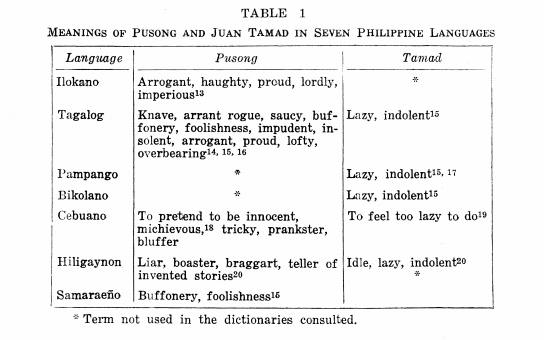When Mythology and Folklore comes to mind, we often think of characters displaying unparalleled might and magic such as heroes, gods/goddesses and monsters. However, there is this other character from myth that is meant to be ridiculed and not be taken seriously due to their antics and humors. The trickster figure will always have the last laugh by pretending to be the dumbest of all and yet, at the end of the day, will subdue even the most formidable adversary.
Often known as the “jester”, the “clown” or simply the “fool”, the trickster is considered to be one of the most widespread figures in world folklore. According to the mythologist Joseph Campbell, the trickster is usually found in cultures which harbor traditions of Shamanism. It’s no wonder that Juan Pusong (Tamad), Pagong and Matsing (Turtle and Monkey) and Pilandok are found in our own culture; our very own tricksters that bring certain truths and wisdom hiding underneath their comical tales and mishaps.

Trickster in a Nutshell
Trickster figures are often depicted as male characters and can be viewed as human, animals or even gods/demigods. They possess antithetical traits that often contradict with one another – such as being stupid and clever, kindhearted and dishonest. One of the most popular figures of the trickster in several tales around the world is the sly fox. Other tricksters are the god Loki from Norse myth and the messenger god Hermes from Greek myth. As the name implies, tricksters are notoriously excellent at fooling man, and even gods. They break rules, mock the powerful and bring discord and chaos through pranks, clever disguises and flowery words while remaining safe themselves.
Some might observe that the trickster brings nothing but lies and trouble – to the extent that it becomes connected with the Devil. In some cultures, the Trickster is an important figure needed to bring change in one’s society. They can be beneficial to man, such as the story of Prometheus who tricks Zeus and brings fire to mankind.
The Misadventures of Juan Pusong
Filipinos are already familiar with “Juan Dela Cruz” who symbolizes all the characteristic of an ‘every man’ Filipino (similar with the Uncle Sam personification of the United States government). But there is another Filipino figure who bears the name “Juan”. The only catch here is that while Juan Dela Cruz elicits the typical native Filipino, the other “Juan” (Juan Pusong) is an unusual character that displays a wit sharper than a Bolo knife and a personality that anyone would love to hate.
The adventures of Juan Pusong (or Juan Tamad) found its way into different tales from various ethnic groups around the Philippines. The majority of them depicted Juan as a peasant male from a humble family. He has this unorthodox cleverness that always saves him from inevitable danger. This is seen in one of the stories where he manages to trick a prince into switching places with him inside a cage that will be submerged in the sea. The next day the king forces him to marry the princess. It would seem that when Juan Pusong starts his charade, no one can ever escape. The King in the story was also a victim of Juan’s alluring bluff when he was made to believe the royal ancestry of Juan’s family lives in the sea.
The name “Pusong” as stated in the findings of Donn V. Hart and Harriet E. Hart possess a synonymous meaning in five Filipino Dialects – namely Ilokano, Tagalog, Cebuano, Hiligaynon and Samaraeno – which describe Juan’s infamous characteristics: proud, indolent, pretentious, foolish and mischievous. But like other trickster figures, Juan Pusong is also capable of showing his benevolent side. An example of this is his merciful act of spare the life of the monkey who stole the Camote (Sweet Potato), or in some other versions a cat, a dog and a snake (notice that all of these animals are known for being smart) that later on help him to become King.
The Strong Will Not Survive, Only The Smart Will
It is believed that only the fastest, strongest and fiercest can live another day inside a foreboding jungle. The stories of Pilandok , or mouse-deer, breaks this common cliche when it proves that you just need to use your head to outwit and outsmart the predators in the jungle.
Filipino author Maria Delia Coronel regards the tales of the Pilandok as the Muslim counterpart of Juan Pusong (Tamad), while Juan Francisco speculated that the Pilandok is a much older tale than Juan Pusong and that the latter is a modern Tagalog adaptation of the former. The story of the Pilandok can be traced back to other trickster stories from Malaysia involving the animal Pelandok, who despite its inferiority succeeded in luring a Tiger and a Crocodile into his traps.

Our own story of the Pilandok starts differently, for it shows Pilandok as a man and not an animal, yet the theme of trickery and deception remain the same – such as the Pilandok pretending to be an heir of a dead Sultan and thus managing to gain the Sultan’s wealth. He also shows his wits by deceiving the Buwaya (Crocodile) to prevent him from eating Amomowai (monkey). In another tale, he tricks many people into buying his supposed magic cane and a goat that defecates gold.
Folkloric Con Artist
Juan Pusong is all about cleverness and Pilandok boasts of his wit, the Ilokano trickster Guatchinango utilizes a variety of tools and devices allegedly containing magical powers to flawlessly pull of his tricks. The name Guatchinango, as found out by Sunee Mesri who studied both Philippine and Thai folktales, came from the similar Spanish word meaning “a shrewd person“. He added also that the name is probably take its roots from the word “guachinango” which was commonly use by Cubans to refer to Mexicans in a derogatory manner – joker or jester.
Sharing the same motif as the tales of Pusong and Pilandok, Guatchinango targets mostly those people who have a higher power or authority such as sultans, kings and even priests. Often times, his stories revolve around him acting as a merchant of mystical items such as a hat that can produce a chicken, a “prophet powder” that with one sniff can give a person the power to foresee the future, and a magical tube that can revive one’s life. But all of these items have one sole purpose in the end – to fool the other characters in a quite hilarious manner while Guatchinango amasses a small fortune.
At some point he even committed deeds that violate law such as bribing a lawyer to convince the judge that he is a mentally challenged individual in order to win his case. He even pretended to be a saint so he could steal a priest’s money. Similar to any con-artist, Guatchinango survives the world he lives in by relying in his skills, while at the same time making fun of the people who are fooled by his ways.
Outsmarting the Monkey
One of the most endearing and famous Filipino folktales is the colorful story of the Turtle and the Monkey which is continuously told and retold with every passing generation. The plot of the story is simple and revolves around the Turtle’s victory over the smart Monkey as they try to trick one another with multiple pranks. Though the Turtle seems to be on the losing side – knowing he is the slowest and perceived to be the dumbest – the tale shows that even inferior individuals can beat perceived superior ones not just once, but many times.

In one version of the story, the Monkey is eating all of the bananas before they can fall to the Turtle on the ground. With resourceful thinking, the Turtle prevents this by putting spikes around the tree where the Monkey climbs. Seeking revenge, the Monkey decides to chop the Turtle into pieces and then cook it for dinner. The Turtle is ready to counter by arguing that it is impossible to cut him up because of his hard shell. He suggests that in order to kill him, the Monkey must throw him in the river. Only after the angry Monkey throws the Turtle in the river does he realize he can swim.
Behind The Trickster’s Laugh
Tales of tricksters are indeed amusing to listen to and most of us Filipinos – especially those in villages and rural areas – we don’t see the story as rude or offensive despite the characters exhibiting foolishness and negative traits. It might be worth pointing out that some variations of Juan Pusong stories contains illicit and mature content which, while in theme with the usual moral lessons, may be a surprise to a parent reading aloud to their child. Moreover, Juan Pusong (Tamad) is sometimes considered as the symbol of all the negative traits of a native Filipino as compare to Juan Dela Cruz.
Despite these notions, trickster tales remains part of our lore. Besides the laughter it brings for every Filipino, it also conveys powerful and important lessons on foolishness and stupidity. Mila D. Aguilar, in her study entitled “Fighting the Panopticon: Filipino Trickster as Active Agency against Oppressive Structures”, explains a poignant meaning behind our trickster lore wherein she indicates that the trickster, like the Filipinos who suffered greatly from waves of colonization, utilizes his cleverness and wit to survive by making his ‘colonizer’ lower their guard by playing the role of a humble “ peasant” or a patient “turtle”, as opposed to kings and tigers.
This is not to show that Filipinos are by nature deceptive and opportunistic but rather wise and clever in dealing with those who try to oppress them – due to the fact that they can’t win by means of power or force. It is observable that most of trickster tales we have often end up with the king dethroned and the trickster himself claiming the crown, using nothing but his own brain to plot a humorous and yet brilliant plan to triumph the odds. This kind of plot where the powerless manage to defeat the powerful or the poor to overcome poverty has become the main trend in many Philippine telesyre, which for me clearly embodies the past and present collective aspiration to gain the freedom and rights all Filipinos once held in this land.
“The trickster’s function is to break taboos, create mischief, stir things up. In the end, the trickster gives people what they really want, some sort of freedom.” ~Tom Robbins
Sources:
Mila D. Aguilar – “Fighting the Panopticon: Filipino Trickster as Active Agency against Oppressive Structures”
Donn V. Hart and Harriet E. Hart – “Juan Pusong: Filipino Trickster Revisited”
Grey Keyes – “ Is the Devil a Trickster?”
Currently collecting books (fiction and non-fiction) involving Philippine mythology and folklore. His favorite lower mythological creature is the Bakunawa because he too is curious what the moon or sun taste like.



